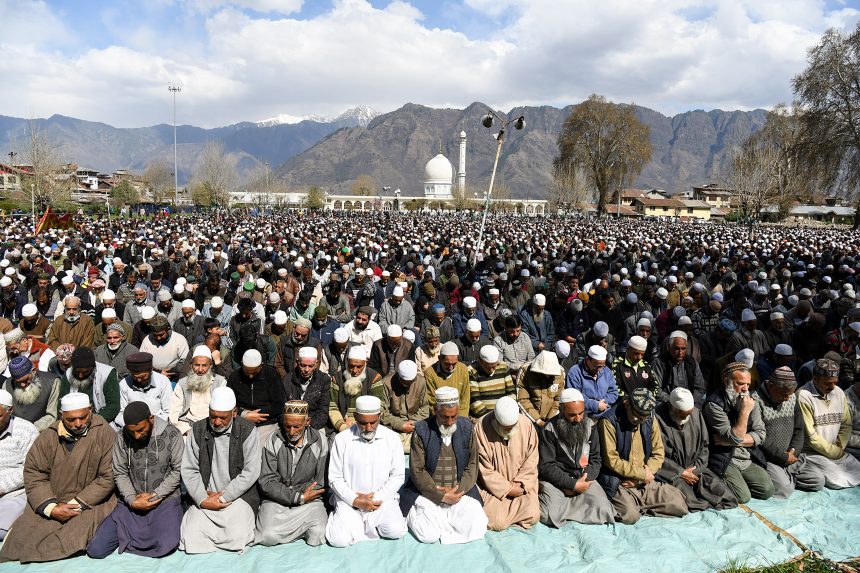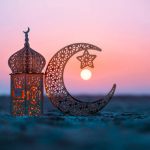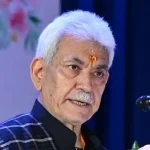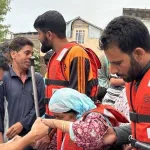Srinagar, Mar 29: Eid-ul-Fitr is traditionally celebrated on the first day of Shawwal, the tenth month in the Islamic calendar. Muslims across the globe mark the end of Ramadan with this festival, which is considered the biggest celebration of the year.
In the past, Eid-ul-Fitr in Kashmir was celebrated with deep-rooted traditions that reflected the region’s rich culture and Islamic values. While many customs still persist today, some practices have evolved over time.
Noted poet and historian Zareef Ahmad Zareef said there has been a change in the evolution of celebrating Eid-ul-Fitr.
He said the entire month of Ramadan was marked by increased worship, fasting, and charity. People spent nights in Masjids, especially during the last ten days (Athikaaf).
“Traditional markets like Lal Chowk and Zaina Kadal in Srinagar would bustle with people shopping for clothes, dry fruits, and sweets. Tailors remained busy stitching new clothes, often working till late at night,” he said.
Zareef said there was a special charm in those days. We didn’t have much money, but the excitement of wearing new clothes stitched by local tailors was unmatched.
“When Kashmir was all green and pollution-free, people used to wait for Eid to celebrate according to their resources and income. There was no show-off like in present society,” he said.
“The day was indeed enjoyed and celebrated by all. For people, it was about happiness and thanksgiving to the Almighty. Women and young girls would welcome Eid by performing Rauf,” he said.
Zareef Ahmad says in the past, middle-class people, including artisans, would wear washed clothes, whereas rich people would wear new clothes. In the morning, Meetha Kehwa was served, and people used to go to Eidgah for prayers.
“The elders would donate money to poor people. Elites used to take care of the people and get essentials for them during Eid. Eidi or a gift given by older relatives was saved by children to purchase essential things,” he said.
Zareef Ahmad said Eid had an ethnic and cultural touch, but we have forgotten it today. The discipline and warm-heartedness that we have lost need to be brought back into our lives,” Zareef said.
He says special care was taken for the weaker sections of society. There was real happiness,” he said.
“Traditional bakery items that were preferred included Kandi Kulcha (Meetha Kulcha), Qatlam (Bakerkhani), Sheermal, and Kashmiri Krip,” he said.
Zareef said there is a need to understand the real philosophy of Eid-ul-Fitr, and people have to celebrate Eid with simplicity.
Master Ghulam Ahmad, a retired teacher from Pattan says the night before Eid, known as Chand Raat, was filled with excitement. The sighting of the crescent moon was celebrated with joy, with mosques announcing the sighting and people exchanging congratulations.
“Women applied henna on their hands, while men polished their shoes and prepared traditional attire, usually pheran or khan dress for men and colorful dresses for women. Kitchens were busy with families preparing sheer chai (salted pink tea), Halwa and other Kashmiri cuisines.”
“My mother would stay up all night cooking. By morning, the house smelled of biryani and spices. It felt magical,” he said.
Shagufta Jameel says on the morning of Eid, people woke up early, took a ritual bath (ghusl), and wore their best clothes, often new or freshly cleaned.
“Men and boys walked to the nearest Eidgah or Masjids for Eid Namaz. The most famous congregational prayer was at Eidgah Srinagar. It was also essential to give Fitrana before the Eid prayer to ensure the poor could celebrate too,” she said.
Shagufta said the elders in Kashmir made sure they understood that Eid was incomplete if the poor had nothing to celebrate.
After the prayer, people embraced each other with the traditional Mubarakbadi and exchanged greetings. Many visited the graves of loved ones to offer fatiha (prayers). Visiting relatives, friends, and neighbors was customary, with exchanges of sweets, dry fruits, and traditional dishes,” she added.
Elders handed out Eidi (money or gifts) to younger family members. “As kids, we waited eagerly for Eidi,” says Mushtaq Ahmad, a resident of Sopore. Even a few rupees felt like a treasure back then.”
In rural areas, folk songs and traditional games added to the festive spirit. Children played games and proudly showed off their new clothes.
“After lunch, we played games in the orchards,” remembers. There were no phones or TVs; we found joy in simple things,” he said.
In earlier times, Eid was celebrated with more simplicity but greater warmth. The focus was on community bonding and spiritual reflection rather than extravagance.
Haleema Jan, a 60-year-old from Srinagar said that eid was not about expensive clothes or lavish parties. It was about meeting people, sharing food, and feeling blessed.”
While many customs continue today, the style and scale have adapted to modern times with the influence of technology and commercialization, Haleem added.
Dr. Sabzar Ahmad Batoo, a local from Achabal Anantnag, says during his childhood, his father would keep his Eidi either in Buegwaer (money bank) or would save it for stationery work.
“Each year, we color and clean our house for the occasion. Family members greet one another on Eid day by saying ‘Eid Mubarak,’ which means ‘blessed Eid,’ and also exchange gifts,” he said.
Dr. Sabzar said these traditions aim to generate a feeling of goodwill. On the second and third days, we also visit relatives throughout the day, enjoying food at every stop.
He said Eid-ul-Fitr is always a very special occasion in Kashmir. By and large, the Eid celebration varies from district to district, and the taste also changes according to regional preferences.








